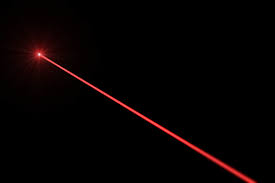Since a picture is worth a thousand words and a video is worth a thousand pictures, I'll let here the equivalent of one million of words.
In this video, produced for the Canadian air force, it is explained with a very good animation, what is happening during the transmission of EM waves.
If I have a perfectly thin laser beam like this, which side is north and which side is south?
The lines of magnetic field are always closed, but you should remember that the fields could be in a more complex situation than just a dipole configuration. Think about the magnetic field produced by an infinite wire: where is the north pole and where is the south?

Image from this article.
The dipole fields is just one possible configuration of the magnetic field. But don't feel bad. I'll let here what Feynman says about visualizing electromagnetic fields in his famous lectures
So you say, "Professor, please give me an approximate description of the electromagnetic waves, even though it may be slightly inaccurate, so that I too can see them as well as I can see almost invisible angels. Then I will modify the picture to the necessary abstraction.” I’m sorry I can’t do that for you. I don’t know how. I have no picture of this electromagnetic field that is in any sense accurate. I have known about the electromagnetic field a long time—I was in the same position 25 years ago that you are now, and I have had 25 years more of experience thinking about these wiggling waves. When I start describing the magnetic field moving through space, I speak of the E and B fields and wave my arms and you may imagine that I can see them. I’ll tell you what I see. I see some kind of vague shadowy, wiggling lines—here and there is an E and B written on them somehow, and perhaps some of the lines have arrows on them—an arrow here or there which disappears when I look too closely at it. When I talk about the fields swishing through space, I have a terrible confusion between the symbols I use to describe the objects and the objects themselves. I cannot really make a picture that is even nearly like the true waves. So if you have some difficulty in making such a picture, you should not be worried that your difficulty is unusual.
The Feynman lectures, vol. II chapter 20-3


